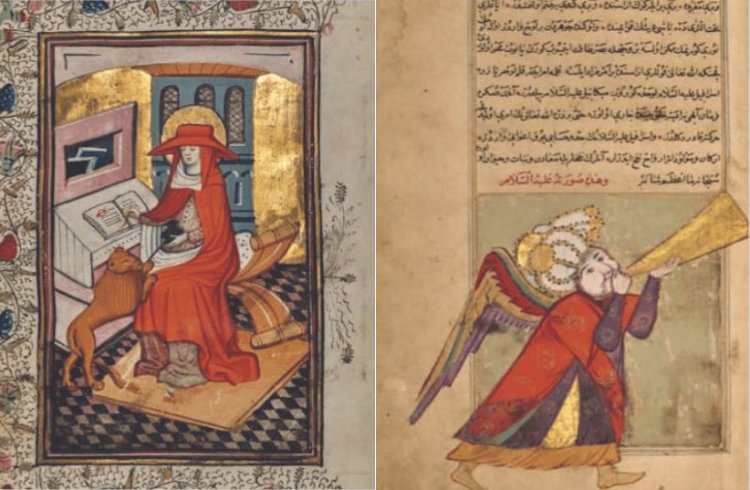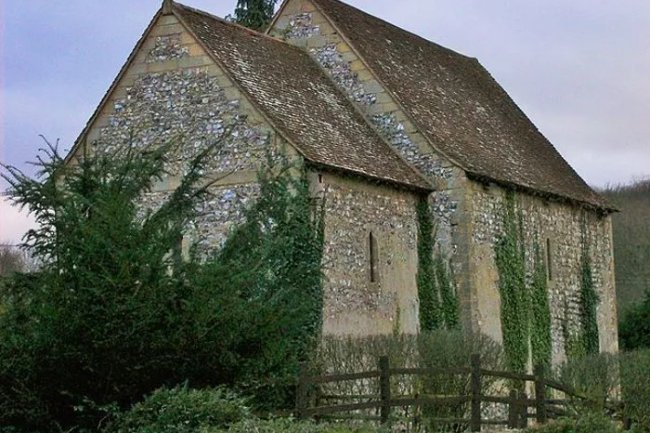NATIONAL LIBRARY OF ISRAEL: "101 TREASURES": A JOURNEY INTO THE PAST

By MIRIAM KATES LOCK, JANUARY 13, 2024, 02:18 ((L to R): "Book of Hours" from Stephan Litt's chapter; The 1659 "Wonders of the Creatures and Marvels of Creation" from Samuel Thrope's chapter (photo credit: Courtesy)
Reading 101 treasures from the National Library of Israel is like visiting an amazing museum, where each exhibit has something interesting and unusual to teach you.
The National Library of Israel is one hundred years old. It began with a vision of a man named Joseph Chasanowich (1844–1919), a doctor from Bialystok, Poland, who dreamed of building the Jewish National Library in Jerusalem. In the delightful volume" Treasures of the National Library of Israel," published in May 2023 to celebrate the grand opening of the new library building, we learn that Chasanowich has delivered 22,000 books to Jerusalem over the years. These books were kept in the First Public Library in Jerusalem, the small library of the Midrash Abarbanel.
The Zionist Congress oversaw the Abarbanel Midrash in 1905. Later in 1925, they merged with the newly founded Hebrew University of Jerusalem to transform into the Jewish University and National Library
From Yemen to Poland, Brazil to Australia, and Russia to the United States, Jews from all backgrounds come to Israel. In addition, many Arab Muslims and Christians live in this state, along with Druze, Bedouins, and other peoples. Each community has its own history, language, and religious and ethnic traditions. Most of these communities have written records from the past, such as interpretations of Biblical sources, personal correspondence, records of business transactions, and prayers. Some also store visual content. The National Library of Israel in Jerusalem has gathered many of these texts and materials from more than 1,000 archives and collections.
Since October 7, the National Library has remained open to visitors. However, due to the difficult situation we have been in, the festive opening event planned for the opening of its beautiful new facility in Jerusalem has been postponed.
101 Treasures is a striking and impressive volume that combines striking books, manuscripts, and much more and is complemented by excellent photographs. The editors have selected 101 rare books, manuscripts, archives, and other materials from the library to present to readers. Each book tells an interesting story.
On September 7, 2023, the newly constructed Israeli National Library Building in Jerusalem was photographed by Yonatan Sindel (Flash 90).
From 1930–1948, when Mount Scopus was cut off from the rest of Jerusalem after the War of Independence, the library was on the Mount Scopus campus of the Hebrew University of Jerusalem. His belongings were stored in various places in the city.
In the Lady Davis Library Building on the Givat Ram campus of Hebrew University in 1960, the items were re-collected. As libraries around the world began to redefine themselves in response to the Internet revolution in the 1990s, the role of national libraries was reevaluated. In the end, a decision was made to separate the library from the university. After years of planning and construction, a new library was recently opened.
Reading the book 101 Treasures from the National Library of Israel is like visiting an amazing museum, where each exhibit has something new and interesting to teach you. The 101 treasures in this book are just an overview of what you will find in the library. Specific themes in the book include "community," "art and text," "crossing cultures," and "travel.".
You will find notes on The Botanist Naomi Feinbrun-Dothan (1900–1995) and her colleague Ruth Koppel, an artist who created flora illustrations for her publications, in the section "Travels." One of Feinbrun-Dothan's many expeditions in the Land of Israel and the Middle East was to ride a camel to Egypt in 1945 to research the local flora.
Ezra Aharon Sha'shu'a, an oud player and composer from Baghdad born from 1903 to 1955, is introduced in the next chapter. In 1932, he went to Cairo to attend the International Congress of Arab Music. He moved to Jerusalem in 1935, performing and composing to perpetuate the city's musical tradition. He was the one who built the Palestinian Broadcasting Service, which later evolved into the Israeli Kol. The National Library also has its own archives.
In addition, you will read about various topics, such as Karaite newspapers in Egypt; directions for Christian pilgrims going to the Holy Land; and Islamic commentaries written by Ahmad Ibn Taymiyyah in the 14th century, who was imprisoned in Syria without pen and paper so that he could no longer write. Maimonides' illuminated Mishneh Torah (Code of Jewish Law) manuscript, which is also from the 14th century, a collection of Israeli New Year greeting cards from 1902-1960, and the arhuta Kadishta (Samaritan Pentateuch) manuscript from the 13th century are other eye-catching treasures. This is just a small part of what you will encounter in this amazing book.
101 Treasures of the National Library of Israel is a valuable addition to any home library and is sure to inspire readers to visit the real National Library. The book itself is highly appreciated and highly recommended. <
101 Treasures from the National Library of ISRAEL, by Raquel Ukeles, Hezi Amiur, Yoel Finkelman, Stefan Litt, and Samuel Thrope, is published by Scala and contains 340 pages. It costs $60.
News Sources: https://www.jpost.com/israel-news/culture/article-781855
What's Your Reaction?





















